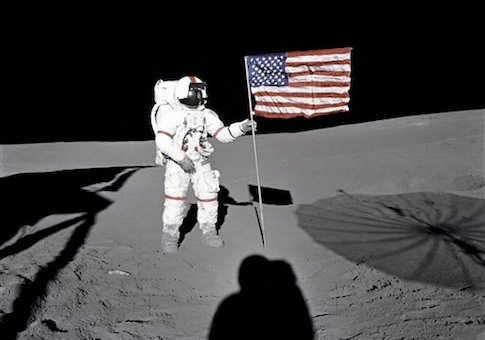The National Aeronautics and Space Administration is spending $80,000 to see what effects space flight has on oral herpes.
The federal space agency has awarded multiple grants and contracts to a researcher at the University of Florida to determine the "Effect of Spaceflight on Herpesvirus Genome Stability and Diversity," beginning last summer. The project recently received an additional $15,000 in December.
"The goal of this study will be to determine the changes in the genomic and mutational diversity that is present in the Herpesvirus virome present in astronaut saliva and urine samples collected before, during, and after space flight," according to NASA’s description of the research. "Ground subjects will serve as the control group providing saliva and urine samples preflight and postflight during the same schedule as the astronauts."
The study will involve "deep sequence analysis" of various strains of the herpes virus, including oral herpes, which has been shown to regenerate in space conditions.
"In summary, the proposed study is a unique opportunity to examine the influence of space flight on the mutation rate and diversity of human persistent viruses and to assess the potential risk of virus mutations accumulating during long-duration missions," NASA said.
The study is focusing on four different herpes viruses, including the virus that causes chickenpox and shingles, by which most humans have been infected.
"At least four (Epstein Barr virus- EBV, Varicella zoster virus- VZV, Cytomegalovirus– CMV, and Herpes simplex virus 1 -HSV1) of the eight known human Herpesviruses are common life-long infections humans have shown to reactivated due to space flight," NASA said. "The fact that space flight is known to increase the frequency and duration of Herpesvirus reactivation sets up a biological environment for these reactivating and replicating viruses to mutate."
NASA said it is likely the "effects of microgravity, radiation, and other physiological aspects of space flight may have a profound effect on the evolution of mutations and adaptations of the Herpesviruses during space flight."
The four viruses include Herpes simplex virus, or oral herpes. Epstein-Barr virus is "one of the most common human viruses." The primary Varicella infection results in chickenpox, and the recurrent infection, known as herpes zoster, results in shingles.
Cytomegalovirus is another virus in the herpes family, and is "spread by direct contact of body fluids, such as saliva, blood, urine, semen, vaginal fluids, and breast milk."
"Eight herpes viruses may reside in the human body, and virtually all of us are infected by one or more of these viruses," according to an article published by NASA in 2012, which explains how many astronauts suffer from shingles after going into space.
"The herpes viruses are already present in astronauts, as they are in at least 95 percent of the general adult population worldwide," the article said. "So measuring the appearance of herpes viruses in astronaut body fluids serves as a much-needed immune biomarker."
NASA has already developed a method to detect the virus that causes shingles early, in order to help astronauts avoid the painful effects of the virus before it resurfaces, according to the article.
The University of Florida project will further test the affects of the viruses in an upcoming flight or ground-based study.
The university has received four separate grants and contracts, totaling $80,000 for the study, which is scheduled to continue through May 2018. No results have been published thus far.
A contract for the study argued that the research on herpes in space could provide "key insights" for terrestrial health.
"This study is significant as it could identify the potential for risks for these viruses generating mutations that could enhance virulence or reactivation propensity that would pose a risk to astronauts health," the contract said. "Such a risk could be significant especially for spaceflights of longer durations."
"In addition to providing this key insight as a means of understanding the risks to astronauts health, it could provide important new data for terrestrial use related to the mutation rates of these persistent human viruses when exposed to stress stimuli that may accelerate mutation rates," it said.
